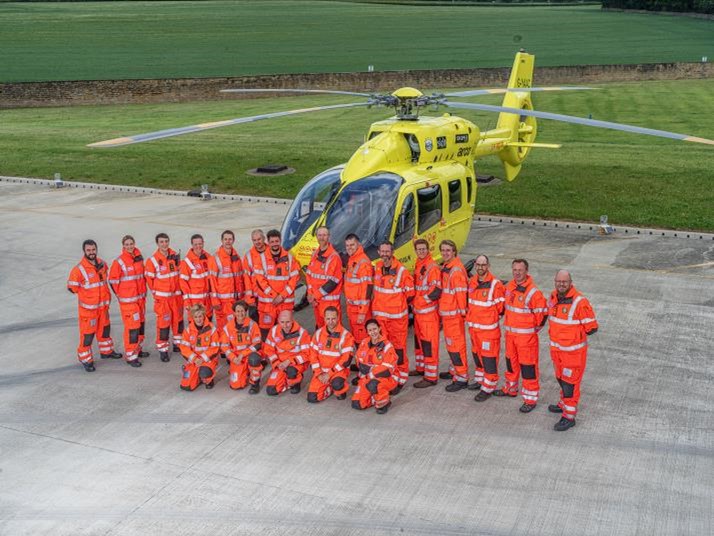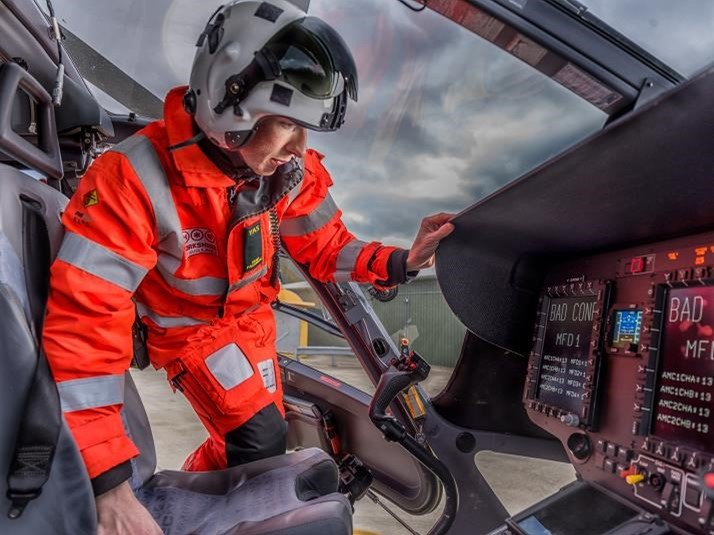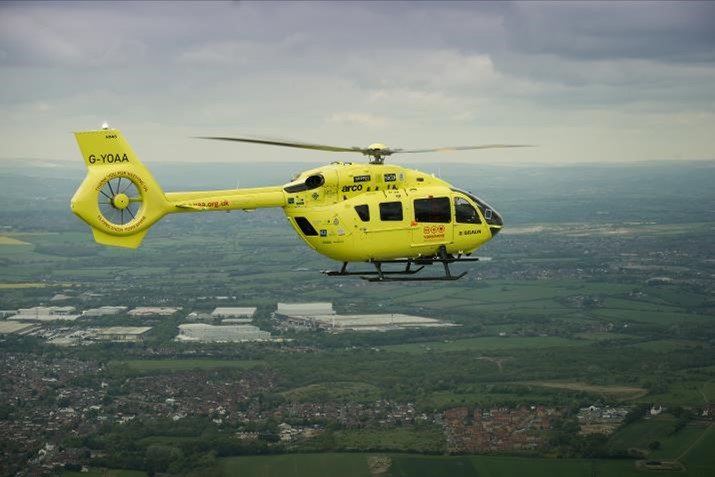Because of the dedication, expertise and rapid response of the Yorkshire Air Ambulance team over the last 20 years, thousands of families across our county still have their loved ones here today.
But they wouldn’t have been able to deliver critical care and save countless lives without the generosity of local communities for which they are truly thankful for.
During the last two decades, the two bright yellow helicopters have been on stand-by 365 days a year, attending on average four incidents daily. Last year, the team of paramedics and doctors treated almost 1,150 patients, including 229 South Yorkshire residents.

While most cases are road traffic collisions, the team respond to a variety of traumatic incidents including falls from height, horse riding or farming accidents, or injured people stranded on countryside terrain. They even saved the life of Top Gear presenter, Richard Hammond, in 2006 at his notorious 300mph crash at Elvington airfield.
But even after two decades of saving lives, few realise Yorkshire Air Ambulance is a charity; they receive no government funding and rely solely on donations to provide their crucial service to Yorkshire residents and visitors.
The two air ambulances cost roughly £12,000 per day to run – that’s £4.4million every year. But when covering a population of five-million people, that equates to less than £1 donation per person every year to keep the service in flight.
This year should have been a momentous one as the charity celebrates 20 years since its inaugural flight in October 2000. While big birthday plans have been grounded, YAA has remained aloft and continued to provide emergency care in the air.
The medical team is made up of 16 paramedics and 11 doctors who are all seconded by the NHS, meaning they pay the wages during their time with the air ambulance. For a paramedic, this is three years following a rigorous application process. All the doctors are consultant level, usually with A&E and anaesthesia specialisms, and they work a few days each month alongside their day jobs.

YAA also has a team of seven ex-military pilots who navigate the helicopters through varying conditions and environments. Yorkshire is a patchwork of rural, rugged and remote landscapes, lots of motorways and densely populated cities, so being able to provide a swift medical response without getting stuck in traffic jams is essential.
Since becoming an independent charity in 2003, Yorkshire Air Ambulance’s donations have continued to soar.
Their two new Airbus H145s, which were bought in 2016, have night-vision capabilities enabling the service to operate during darkness or reduced visibility. They also are fitted with modern equipment to treat patients at the scene and now carry blood for in-air transfusions.
The two helicopters are based at RAF Topcliffe in Thirsk and Nostell Priory in Wakefield which they relocated to in 2012 from Leeds Bradford Airport and Sheffield Business Park. The bases are strategically placed to reach any area across the four-million-acres of Yorkshire within 20 minutes at speeds of 160mph, along with quick transportation to the four major trauma units in Sheffield, Leeds, Hull and Middlesborough.

They also have a dedicated air desk for rapid dispatch, usually in around three minutes from receiving the 999 call. It is the lead paramedic’s responsibility to listen into the 2,000 incoming calls and assess whether an air ambulance is needed and which cases are priority.
The fundraising team also has great responsibility to raise the gargantuan funds needed to finance the service. A lot of their income comes from having stalls in the community and they usually attend five every week in each region, supported by a loyal team of volunteers. Due to Covid-19, all of these were cancelled, resulting in around £420,000 in lost income.
But all hope is not lost; lockdown saw an increase in regular giving and the team are grateful to the public for their continued support. They also have a board of very savvy trustees who have saved money for situations like this, meaning no staff were furloughed during the pandemic.
As a charity, it’s refreshing to hear they don’t cold call asking for donations, post charity bags through letterboxes, or ask for monthly direct debit payments. Instead, they welcome legacies or fundraising events in their name and have a lottery – which most winners usually donate back.
While the anniversary celebrations are postponed until next year, they still have a selection of commemorative gifts available in the online shop including teddy bears and badges, with every purchase going towards saving more lives.
To find out more about Yorkshire Air Ambulance or to donate, visit www.yorkshireairambulance.org.uk






